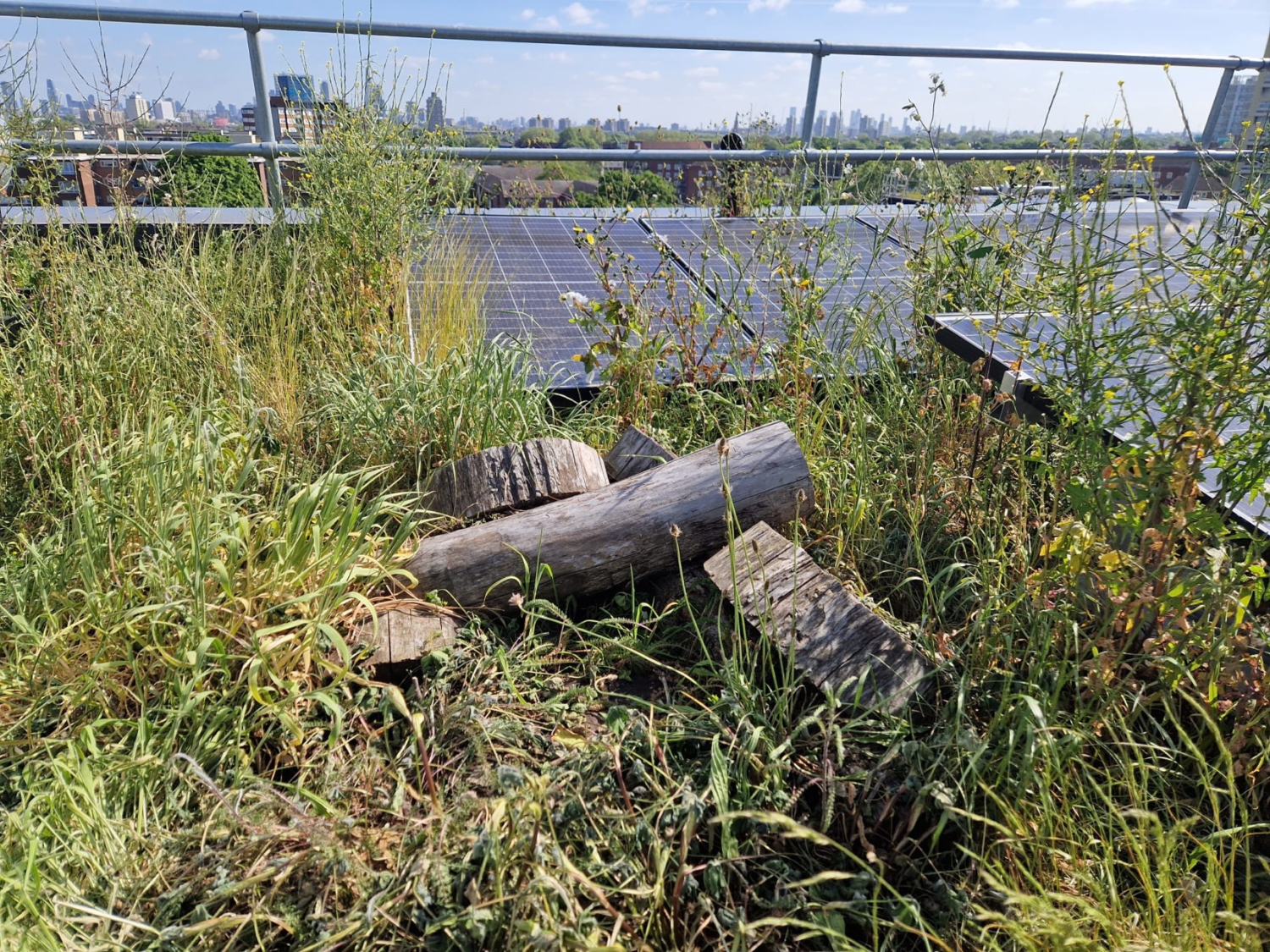
It’s no secret that we urgently need to switch away from carbon fuels to renewable sources, and we also need to halt and reverse the human-caused species loss as soon as we can. Increasingly, legislation is encouraging the use of buildings – new and existing – to support these goals.
Biosolar roofs offer a solution to both of these challenges. A fusion of a green living roof and renewable solar energy source, biosolar roofs leverage the benefits of both systems to create a symbiotic solution that enhances sustainability and ecological diversity.
So, what is a biosolar roof and how can they affect everything from planning permission to monthly energy bills to supporting a greener future? Let’s begin with the basics…
Solar roofs: the basics
“Solar PV roofs are definitely the hot topic currently,” comments Luke Rootham, Product Manager for Axter Solar. “Partly, that’s due to awareness of the net zero agenda but, there’s a strong financial argument too. Energy prices are so high that the cost of installing a system can be recouped very quickly, and then you’re just saving money every month.”
Our sales team also reports that many building owners and managers are simply enthused by the idea of making a positive contribution to climate change through renewable energy generation, using their often-unused roof space.
In terms of detail, there are two approaches to solar PV roof systems that we offer at Axter. One option involves flexible photovoltaic panels that are bonded directly to the waterproofing membranes. The other option is traditional, rigid solar PV panels.
Flexible solar PV systems, such as Axter’s Solar PV Flex offering, are versatile and can be installed on curved surfaces as well as flat roofs. Recently, we were asked to look at the possibility of adding a flexible solar PV system to an observatory, which shows you really can make practical use of every square metre of almost any roof.
Flexible systems are also lightweight and a good choice for roofs that can’t bear the weight of heavier options. More traditional, rigid-panel solar roofs, however, are cheaper per watt of energy produced, so they will generally be chosen for flat roofs that can withstand the weight involved.

Green roofs: the basics
Industry body GRO - the Green Roof Organisation - defines a green roof as what is created when a planting scheme is established on a roof structure. Axter is an active member of GRO, with Michael Anaxagorou – UK Sales Director – on the GRO board and Luke himself invited to join a new biosolar-focussed working group. “The two main types of green roof are sedum roofs and biodiverse roofs," Luke goes on to explain. "The former involves less soil and a narrower range of seeds planted. Building owners and managers are increasingly requesting biodiverse roofs to achieve a greater Biodiversity Net Gain (BNG).”
This is important because the Environment Act 2021 amended the laws under which planning permission is sought. Starting in November 2023 (or April 2024, for smaller sites) local authorities cannot approve planning submissions unless you can show your development will result in at least a 10% BNG. Biodiversity net gain assesses the quality as well as quantity of habitat you will create.
Luke continues: “Biosolar is becoming increasingly popular, and you can see why. Combining green roof and solar energy technology has the potential to radically improve our urban environments, whether that’s on new build developments or by reimagining the roof spaces of existing buildings.”
Realising the full potential, together
The benefits of combining biodiverse green roofs with solar are extensive, and include:
- Sustainable energy generation: Using the elevated, unobstructed positioning and expansive surface area of green roofs to accommodate solar panels harnesses renewable energy from the sun.
- Promoting biodiversity: Biosolar roofs foster biodiverse ecosystems. Although green roofs are defined in terms of botany, not zoology, biodiverse roofs attract a much wider range of birds, butterflies and other wildlife than traditional sedum roofs. The integration of diverse plant life on biosolar roofs enhances local biodiversity, supports urban wildlife populations and promotes a healthier environment for all.
- Environmental benefits: Plants reduce localised temperatures due to a process called evapotranspiration, reducing the urban heat island effect. On top of this, solar PV panels work more efficiently when they’re cooler, so biosolar roofs are more efficient. The synergy works the other way too. The roof areas shaded by the solar panels are suitable for growing different plants than in unshaded sections, so the goal of diversity is naturally easier to reach.
- Urban aesthetics: Beyond their many functional benefits, biosolar roofs also enhance the visual appeal of urban landscapes. The vibrant greenery juxtaposed with the sleek design of solar panels creates a striking architectural fusion, contributing to the overall visual appeal of buildings.
As we work towards creating more sustainable cities, biosolar roofs provide a promising solution that benefits both the environment and the community. Their positive impact on biodiversity, energy production, and visual aesthetics establishes them as a transformative roofing option which supports the pursuit of a greener future.
Axter offers flexible or traditional solar PV roofs, including biosolar. Our full design service will see our team work with you every step of the way, performing all the calculations you need for energy yield, plus wind load and uplift. If you’d like to discuss your next roofing project, we’d love to hear from you, so please do get in touch.


